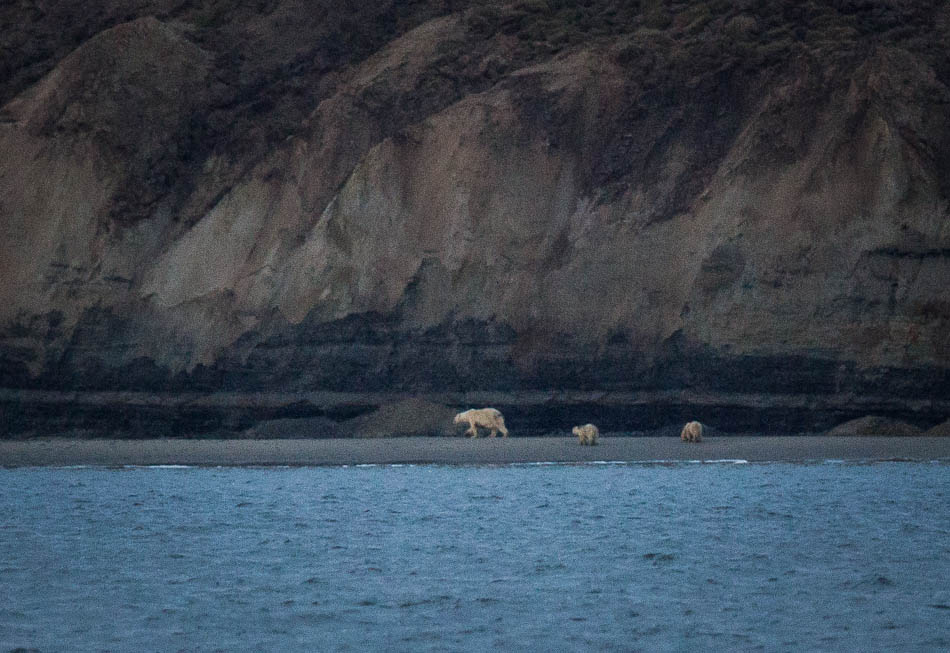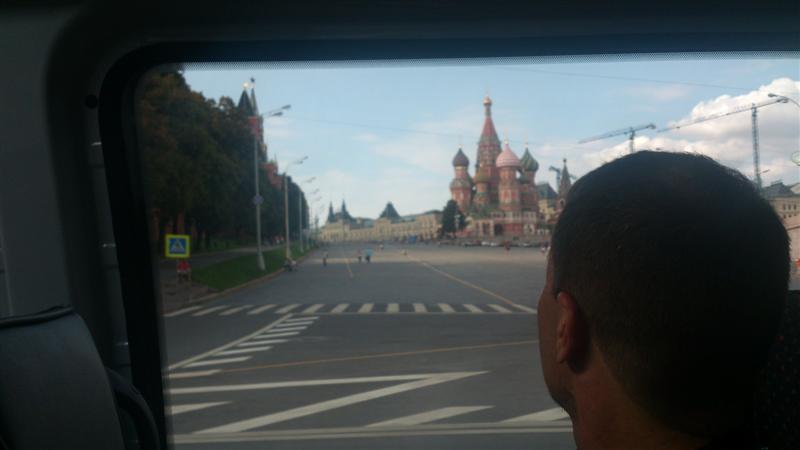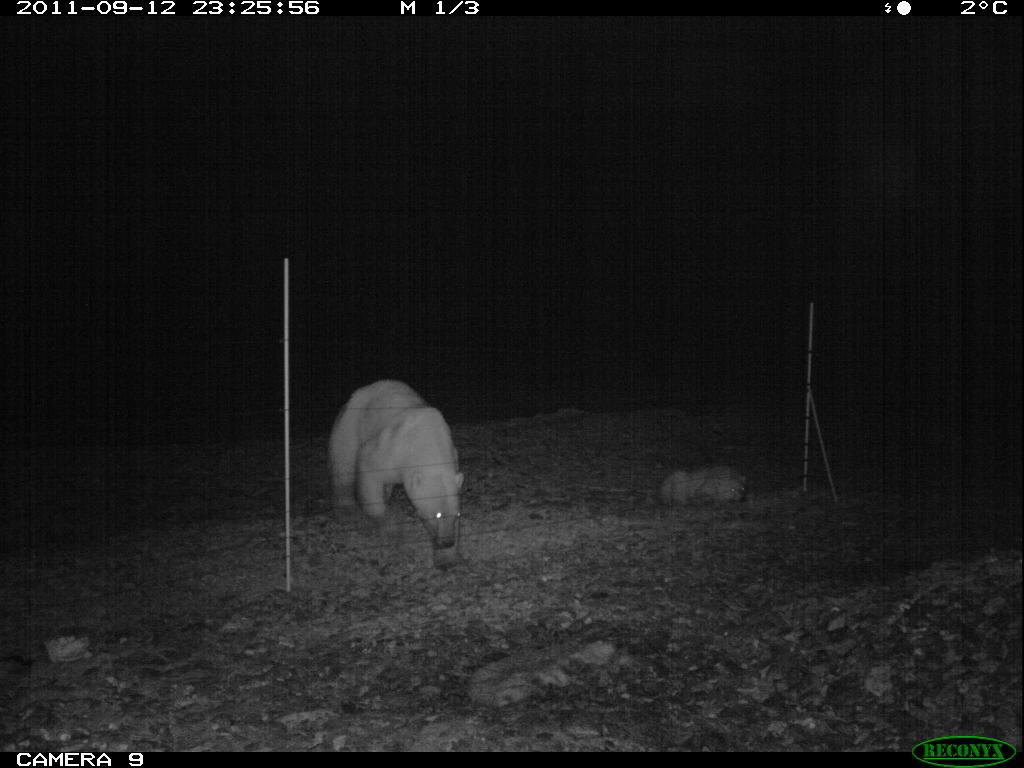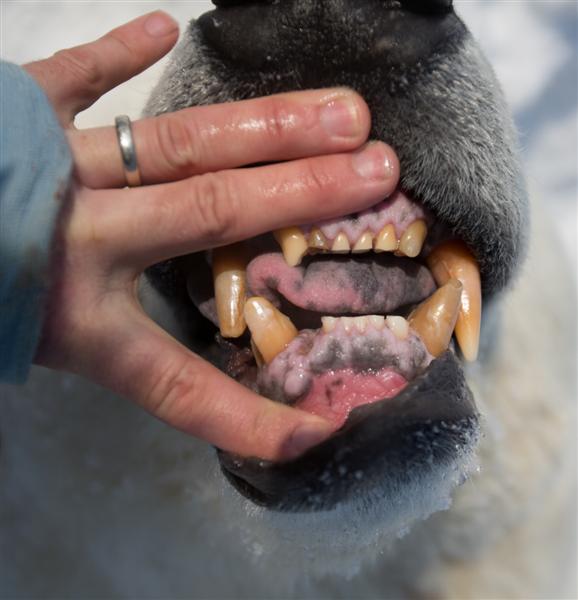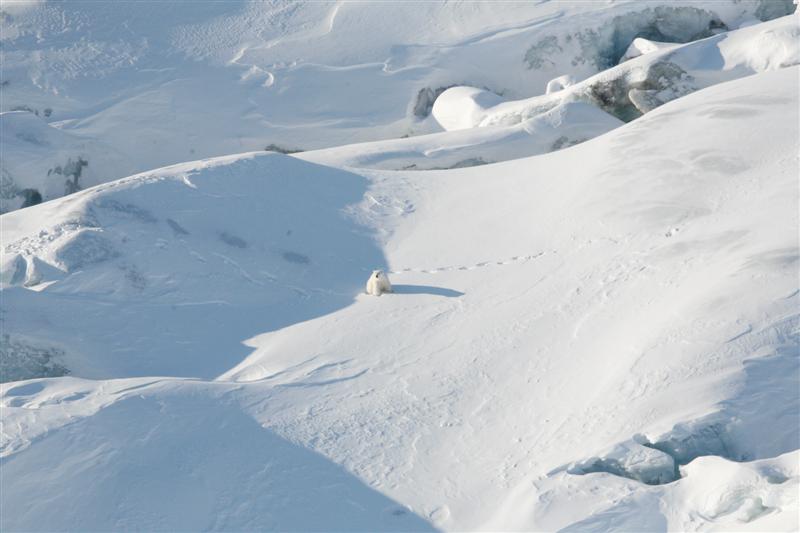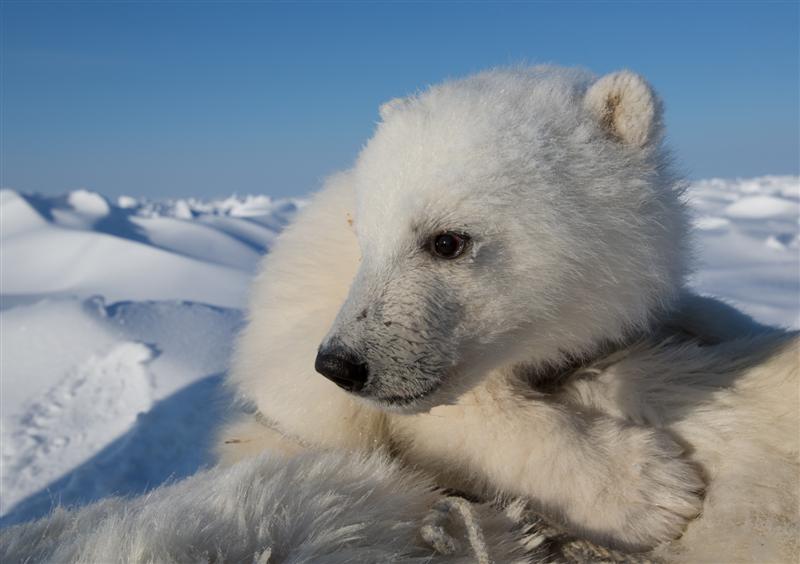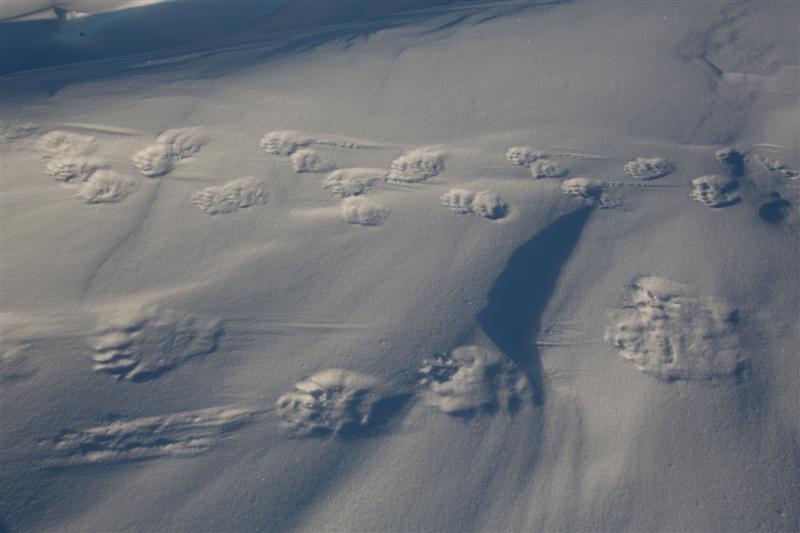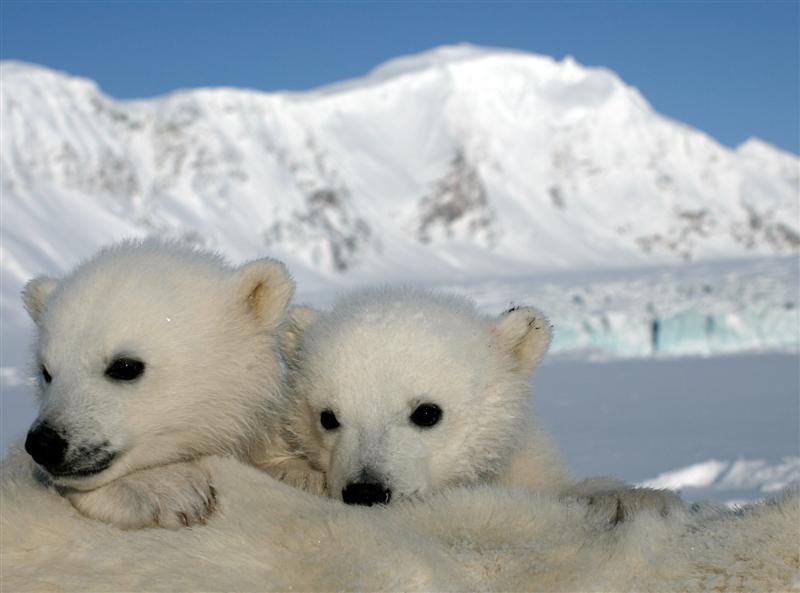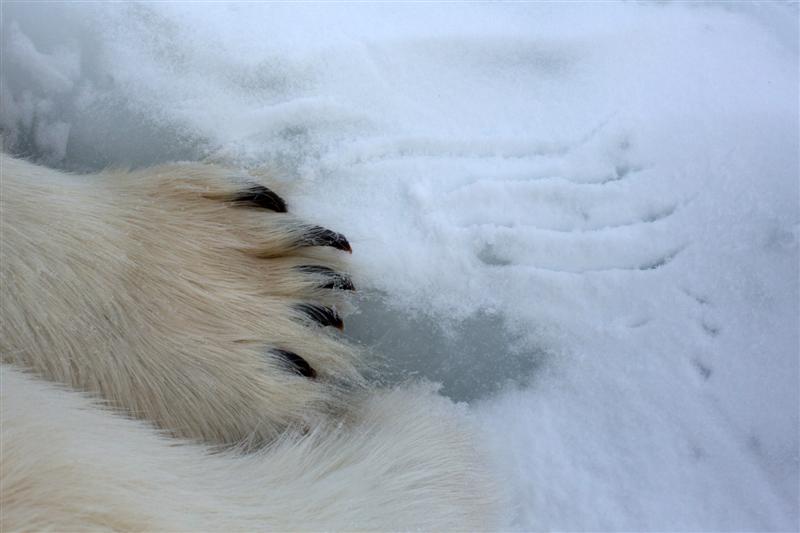
Our first polar bear
A WWF-led research team, a Canon photographer, and crew are traveling to Siberia’s Arctic coast on the Laptev Sea, to help solve a scientific mystery. The Laptev Linkages expedition is sponsored by Canon.
Mikhail wakes up just after midnight. The crew has spotted our first polar bear, and it’s a family group! The quiet, sleepy cabin bursts into a frenzy of activity as layers are added and binoculars readied.
We are just passing along Little Begichev Island at the edge of the Laptev Sea. While it’s just past midnight, it’s still quite light outside. We watch as the sow and her two yearlings amble along the shoreline. At first, they appear to be moving quickly, though we don’t see any other bears. We are a good 100 meters off the beach and in a slow moving and quiet boat, so it seems unlikely that we have bothered her, but if she is unused to human activity, it’s possible.
For the crew of the boat and several of our team, It’s their first bear. Mikhail, Anatoly, Tom, and I immediately look for signs of other mammals in the area (bears, walrus, possible carcass) and try to assess their body conditions. The distance and lighting challenge our binoculars, so we are glad to have high-resolution imagery from the DSLR to refer back to later and confirm our assessment.
The sow appears to be in relatively poor condition and we agree she’s between a 2-2.5 on a 5-point body condition index. The cubs look to be in great shape for their age- a real testament to their mum. Unfortunately, she’ll need some luck on her side to successfully rear these two beyond the summer. Little Begichev is small and appears to offer little in the way of useful food. It’s also a fair swim to Big Begichev Island, where there are a few more options, including reindeer and muskoxen. Big Begichev is also known to be used by walruses in the summer and has more beach area to catch the odd carcass. We wish the bear the best as we motor northward.
Around half past three we run into heavy fog and drop anchor for a few hours adjacent to the large island. Sleep is short and fitful as may of us want to make sure and see everything we might pass- from the smallest of birds to the possibility of whales!
